Named after a variety of wind, fittingly one that flows down slopes, the Obōz Katabatic LT Low GTX is a hiking shoe built for speed in the hills. Designed by Montana-based footwear brand Obōz, it's aimed at fastpackers, day hikers and speed demons.
It’s got the look of a trail running shoe – a breathable mesh upper, a chunky midsole and deep and arrow-shaped lugs hint at footwear designed for fast adventures.
Weighing in at 335g (men’s UK size 8), it’s also very light for a hiking shoe, with a drop of 8mm offering a nice balance between cushioning and ground-feel. The upper is made from 100% recycled polyester overlaid by a TPU skeleton for structural support. TPU is also present in the reinforced toe cap.
Beneath the mesh is a Gore-Tex membrane that provides that all-important waterproof breathability. So, what we have here is a comfortable, lightweight, moderately protective and waterproof shoe that certainly ticks a lot of boxes and use cases.
It may not be as rugged as some and it won’t excel on technical scrambling terrain. However, for fast hiking in the hills, this American trail shoe is a great shout.
Find the women's version here.
Pros
- Comfortable fit
- Grippy outsole for muddy trails
- Highly versatile design
- Made with recycled materials
- A brilliant all-rounder
Cons
- Uncertainty around long-term durability
- Not the most protective
- More suited to casual hikers than pros
| Men's sizes: | UK 7-13 |
| Women's sizes: | UK 4-8.5 |
| Weight: | 335g per shoe / 11.8oz (with men's size 8) |
| RRP: | £150 / $170 |
- 100% recycled polyester mesh with TPU Hotmelt overlays on the upper
- Sturdy TPU reinforced toe cap
- Form hugging heel cup, sculpted mid-foot, and a generous forefoot & toe box
Upper and waterproofing
Obōz has a keen eye on sustainability. It plants a tree for every pair of shoes sold and, in the case of the Katabatic LT Low GTX, the upper is primarily made from 100% recycled polyester. The use of synthetic material, instead of something like leather, means no animals were exploited in the shoe’s creation, though it’s also likely to be less durable in the long run.
Mesh, along with the Gore-Tex Invisible Fit lining, ensures that it’s a shoe with moisture-wicking capabilities, while the waterproof membrane will keep your feet dry up to a point. However, as is always the case with low-cut hiking shoes, water will get in over the top if you’re taking on boggy terrain.
Unlike many Gore-Tex hiking shoes, the waterproof lining is bonded directly to the upper – it’s a design that’s lighter and leads to enhanced breathability compared to the usual internal Gore-Tex bootie.
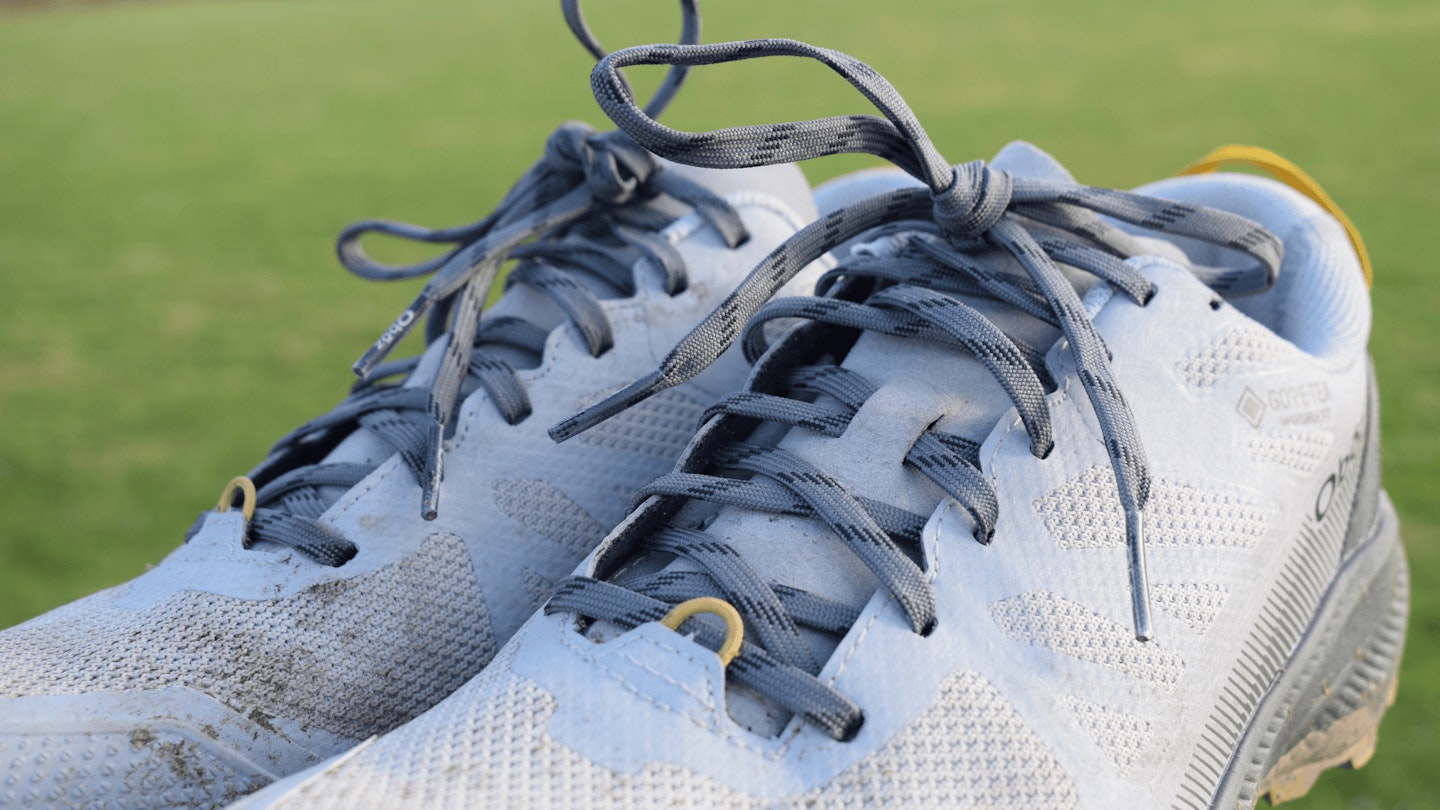
TPU overlays enhance the durability, while adding a degree of support and adding to the shoe’s ability to cope with rock abrasion. It’s not as rigorously protective as a leather shoe with a wrap-around rand, but the shielding here is better than you’d get on a dedicated trail running shoe.
As usual, the toes get the lion’s share of the reinforcement, with a tough TPU cap that’s designed to protect your little digits from sharp rock. The no-frills lacing system doesn’t go as far towards the toes as an approach style shoe, but I found that it does the job perfectly well.
Midsole
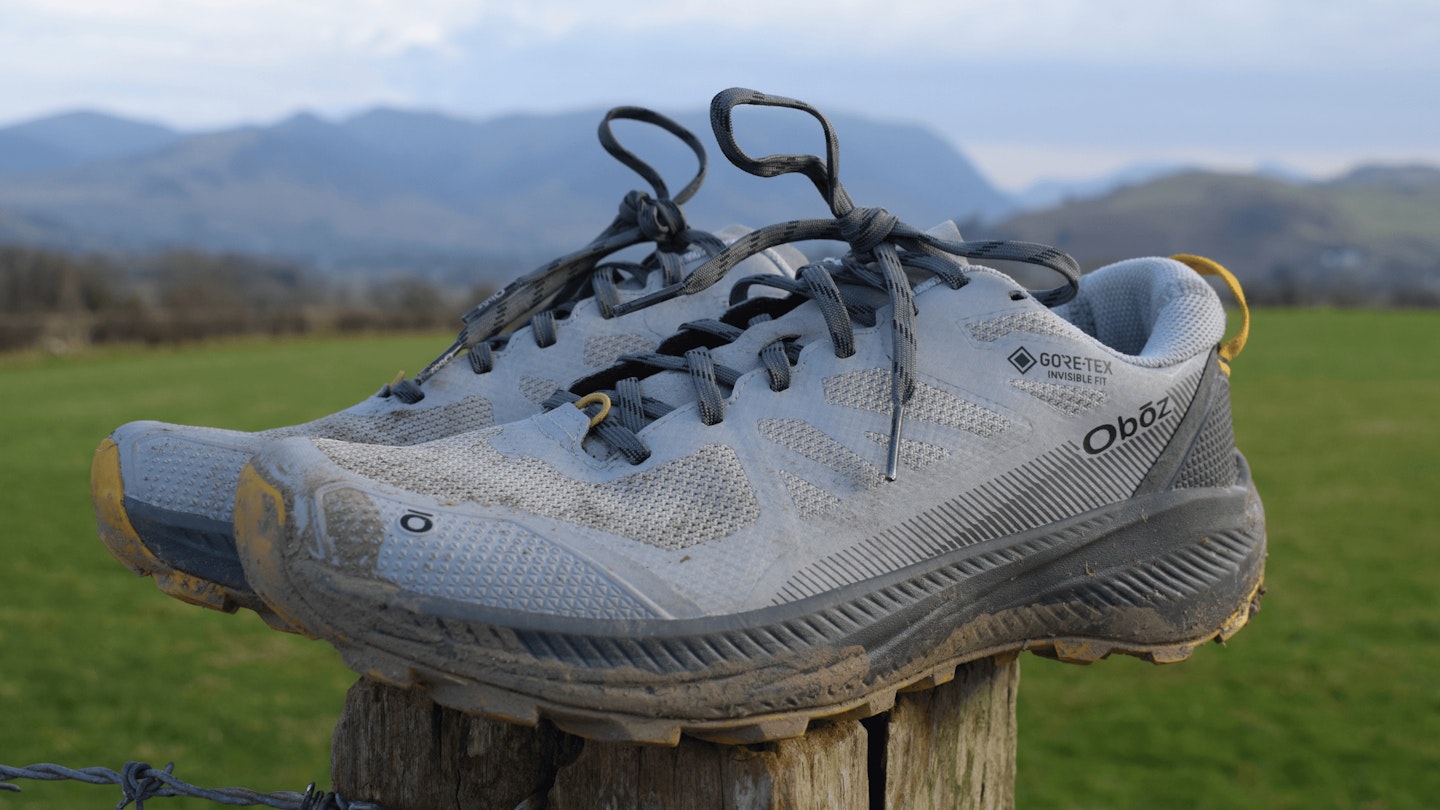
The Ō Fit insole is nicely cushioned, particularly at the heel. This, combined with the shoe’s supple upper and nicely cushioned tongue, makes it comfortable straight out of the box. Beneath this, a compression moulded EVA midsole provides the propulsion.
This is Ōboz’s proprietary ACTEnergy system, designed to provide a responsive and cushioned ride. I found that the result is a shoe that’s comfortable after many hours on the trails, feels agile and yet provides the required support and stability for most hiking assignments.
Outsole
The lug pattern on the Katabatic LT GTX Low’s outsole isn’t too dissimilar to something like Inov8’s Trailfly or Salomon’s Speedcross, two trail running shoes that work pretty well on the UK’s often muddy trails.
Indeed, I discovered that these deep lugs held sloshy ground very well whenever the urge to run downhill became too much. That you can give into these urges is a real strength of the Katabatics – they’re very much a hybrid between a hiker and a running shoe.
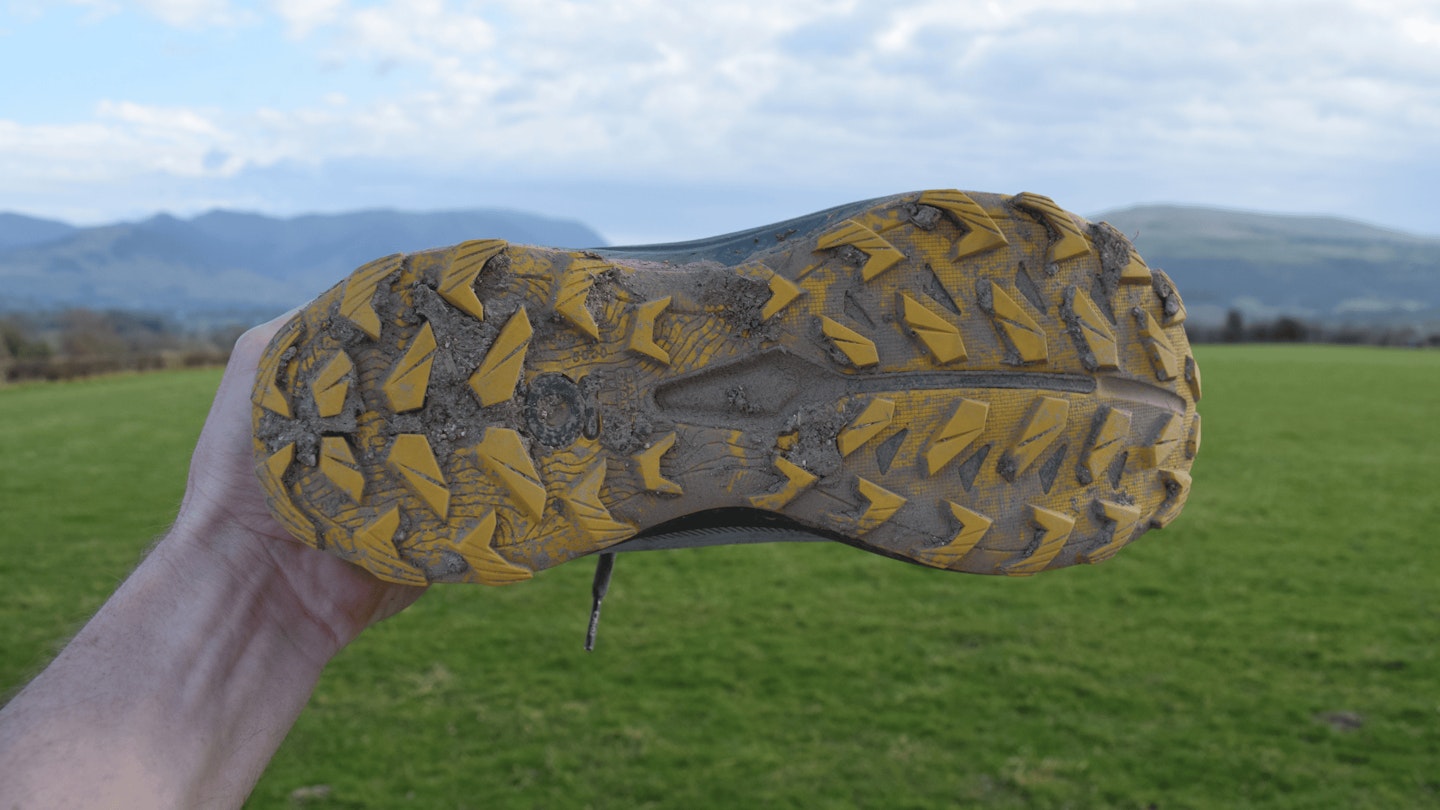
Obōz uses its proprietary Trail Tread rubber compound, a solid all-rounder that marries grip on dry and wet terrain with durability. Tried-and-tested by the brand, it’s difficult to assess exactly how its long-term performance will fare when up against Vibram’s monopoly, but I’ve been suitably impressed thus far.
I’d say that Vibram’s MegaGrip is slightly better suited to slick rock but, in truth, there’s not a lot in it. The outsole is also less rigid than the more technical approach shoes I’ve tested elsewhere, but it’s stiffer than your average trail running shoe.
Price and performance
The Katabatic LT Low GTX will officially set you back £150 ($170), though some retailers knock a little bit off. There are other members of the Katabatic family to consider too, available in both men’s and women’s versions.
If you were looking to save the pennies and weren’t too fussed about waterproofing, the standard Katabatic LT Low comes in at £105 ($145).
Obōz names its Katabatic Wind Low as its most technically advanced footwear, featuring a carbon plate and a nitrogen-infused foam midsole layer. This speedier shoe will set you back a cool £170 ($185) and isn’t waterproof.
There’s also the higher cut Katabatic LT Mid for £120 ($165) and the Katabatic LT Mid GTX Waterproof, again £170 ($190). These are better options for longer days with a heavier pack and, when it comes to the GTX version, water will have a tougher job getting in over the top. However, you lose a little of the lower cut version’s speed and versatility.
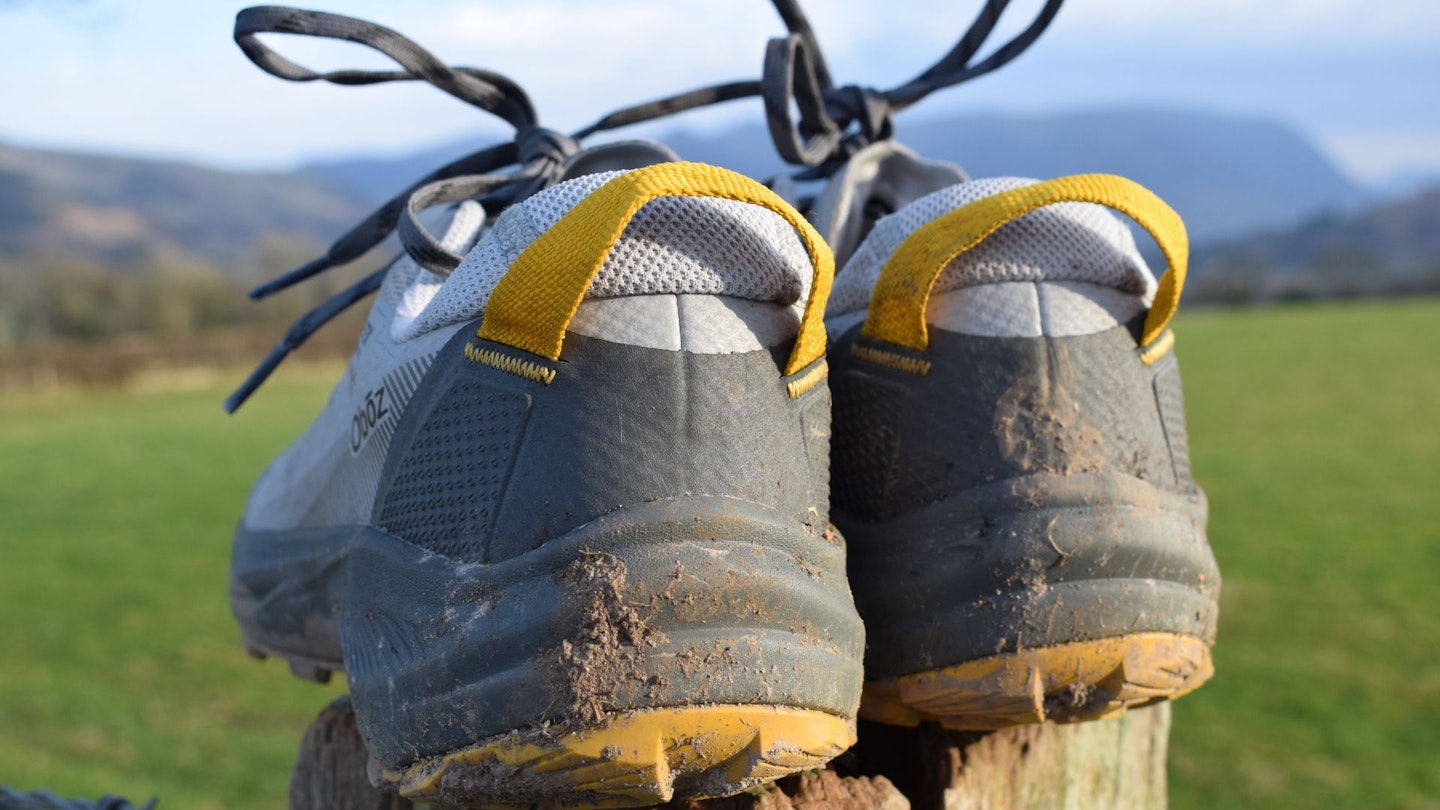
I found the Katabatic LT Low GTX to be a very amenable companion on the UK’s mountain trails. Comfort is a real strength, regardless of whether I was strolling or speeding things up.
The fit was unrestrictive, with around average width, and was pretty generous around the toes, too. As expected, the grip was solid on a range of terrain and I’d happily launch into a downhill canter if getting to the pub for last orders was going to be a close call.
As mentioned, the midsole provides a good amount of support and stability, while the outsole is fairly rigid, but not in the same league as many approach shoes. This means that the Katabatic is pretty decent on rocky ground, though I’d want something more rigid and designed more with scrambling in mind for graded scrambles, particularly if the rock wasn’t dry.
Nevertheless, there’s a decent amount of protection here and my feet never felt like they’d taken a battering after a long day on rocky terrain.
Verdict
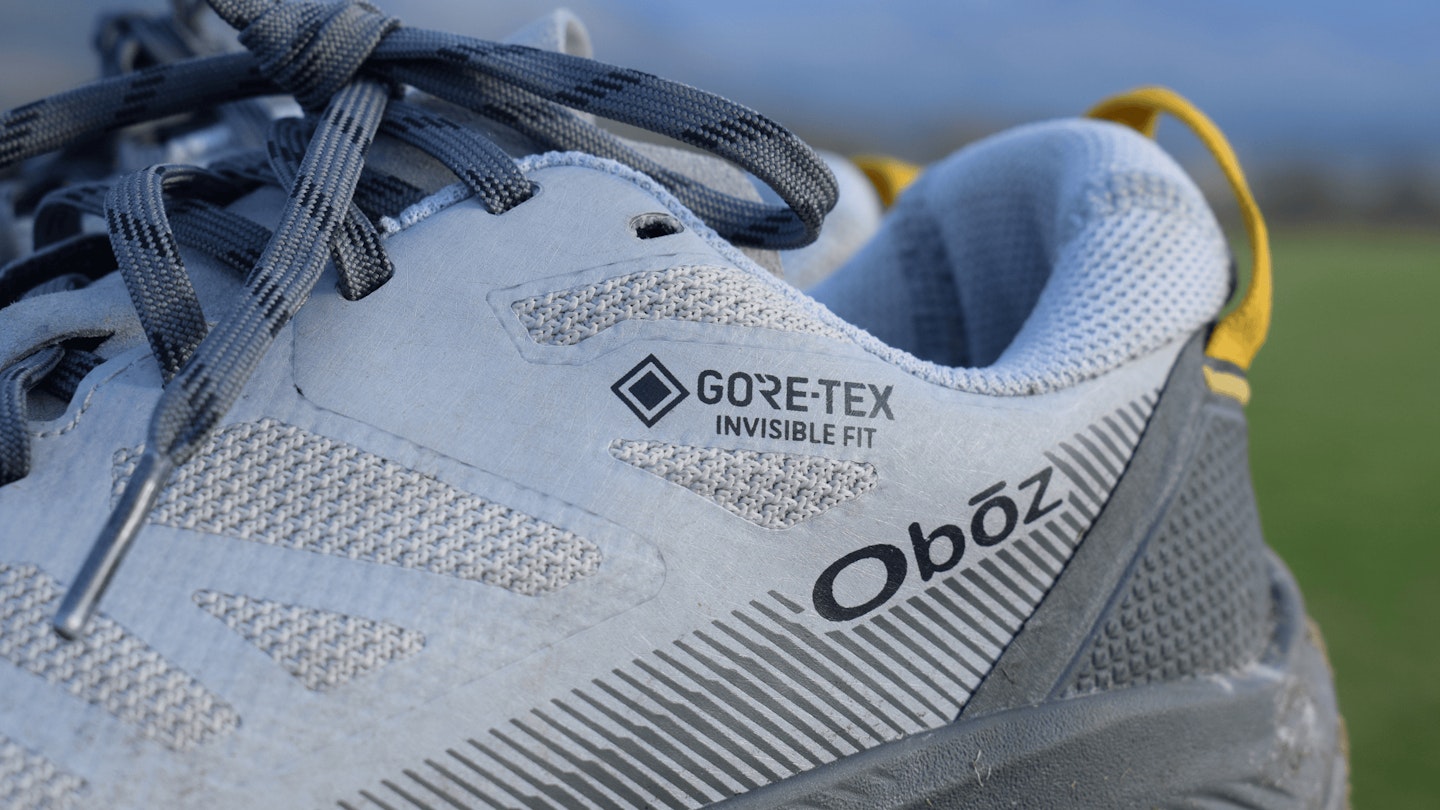
An effective hybrid between a trail running shoe and a hiking shoe, the Katabatic LT Low GTX Waterproof is a solid all-rounder, with a range of potential use cases from walking the dog right up to easier scrambling.
It’s not as technical or protective as some of the more approach orientated shoes in our round-up, but for speed and comfort on most trails, these are a very good option.
For some expert tips on how to choose hiking shoes, check out our buying guide.
Shop this product
About the author

James Forrest is a prolific peak bagger and long-distance walker who’s one of the most high-profile outdoor writers in the UK. He's perhaps best known for climbing every mountain in the UK and Ireland (all 1,001 of them!) in three years. He wrote about the English and Welsh part of that challenge in his book, Mountain Man.
James writes regular features and route guides for Trail and has been one of our main gear testers for the last few years. He reviews every type of outdoor kit and is a real authority on everything you need for wild camping and packing light for a multi-day walk. You can follow his adventures on Instagram.

